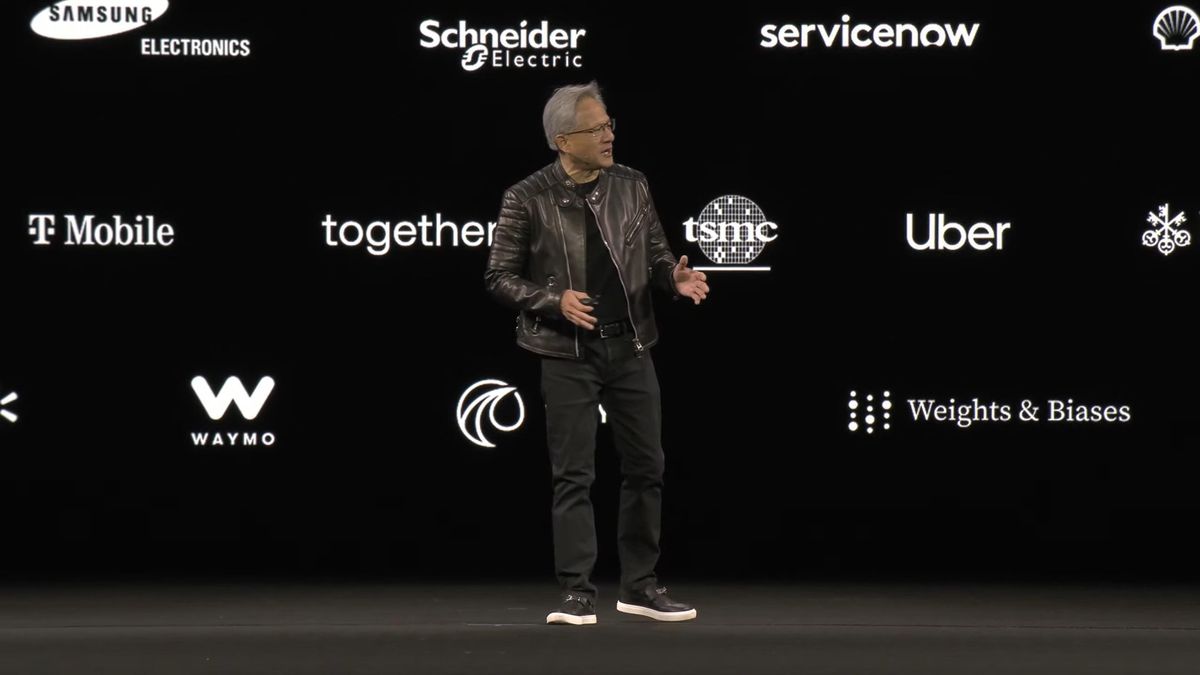There might be a party. I was not invited.”
That’s good news for Intel, which made news of its own as Intel’s new CEO, Lip-Bu Tan, has now taken the helm with a $1 million yearly salary plus a whopping potential total of $68 million in bonuses.
Later in the week, Intel told us that Ann Kelleher, the EVP responsible for developing Intel’s chip fabrication technologies, would retire by the end of the year. Intel had previously laid out a public succession plan for Kelleher, but the company decided to reorganize the Intel Foundry operations as part of the changeover. It isn’t clear how much of the new organizational structure was architected by Lip-Bu Tan, but he clearly executed the new plan mere days after he assumed his new role as CEO.
Perhaps we’ll see more similarly decisive actions at Intel soon as Tan enacts a turnaround plan. Meanwhile, Intel ex-CEO Pat Gelsinger stopped by GTC to repeat his claim that Jensen “got lucky with AI.” Gelsinger also lamented Intel’s past indecisive execution of his Larabee GPU project, which was famously killed after he left the company.
Old HDDs learn a new NVMe jam while SSDs get liquid cooling
HBM memories attract all the attention for AI GPUs and accelerators, but the massive data training sets have to be stored somewhere, and storage solutions tailored specifically for AI use cases are now proliferating.
I’m always a sucker for high-capacity SSDs, and Kioxia’s new PCIe 5.0 LC9 certainly fits that bill. Kioxia announced the new 122.88TB SSD at the show, and it packs a big performance that matches the big capacity with up to 15 GB/s of bandwidth on tap.
Seagate also had a proof-of-concept demo that included NVMe HDDs. When it comes to NVMe, we naturally think of SSDs, but HDDs with the interface have been under development for quite some time. Extra performance isn’t the goal, though. Seagate says utilizing the NVMe interface will enable scaling pools of SSDs up to the exabyte level by utilizing the fast and flexible NVMe-over-Fabrics (NVMe-oF) protocol. When deployed into software-controlled tiered storage systems in tandem with NVMe SSDs, Seagate thinks it has the winning formula for top-tier AI server storage performance.
Finally, the ‘world’s first’ liquid-cooled enterprise SSD debuted at the event. We’ve seen more than a few different takes on watercooled SSDs for the consumer market. Still, none of them are designed for the harsh environments or the stringent reliability metrics needed for servers. Solidigm’s D7-PS10101 E1.S is watercooled but also hot-swappable, meaning it can be changed without shutting down the server, thus also meeting critical serviceability criteria for AI data centers that can’t miss a beat.
Jensen Huang also was up to his usual antics as he served food from the Denny’s food truck to attendees, and there were far too many other product announcements to cover here. Head to our GTC 2025 page for more details on the other new hardware announcements and deep-dive specs.
